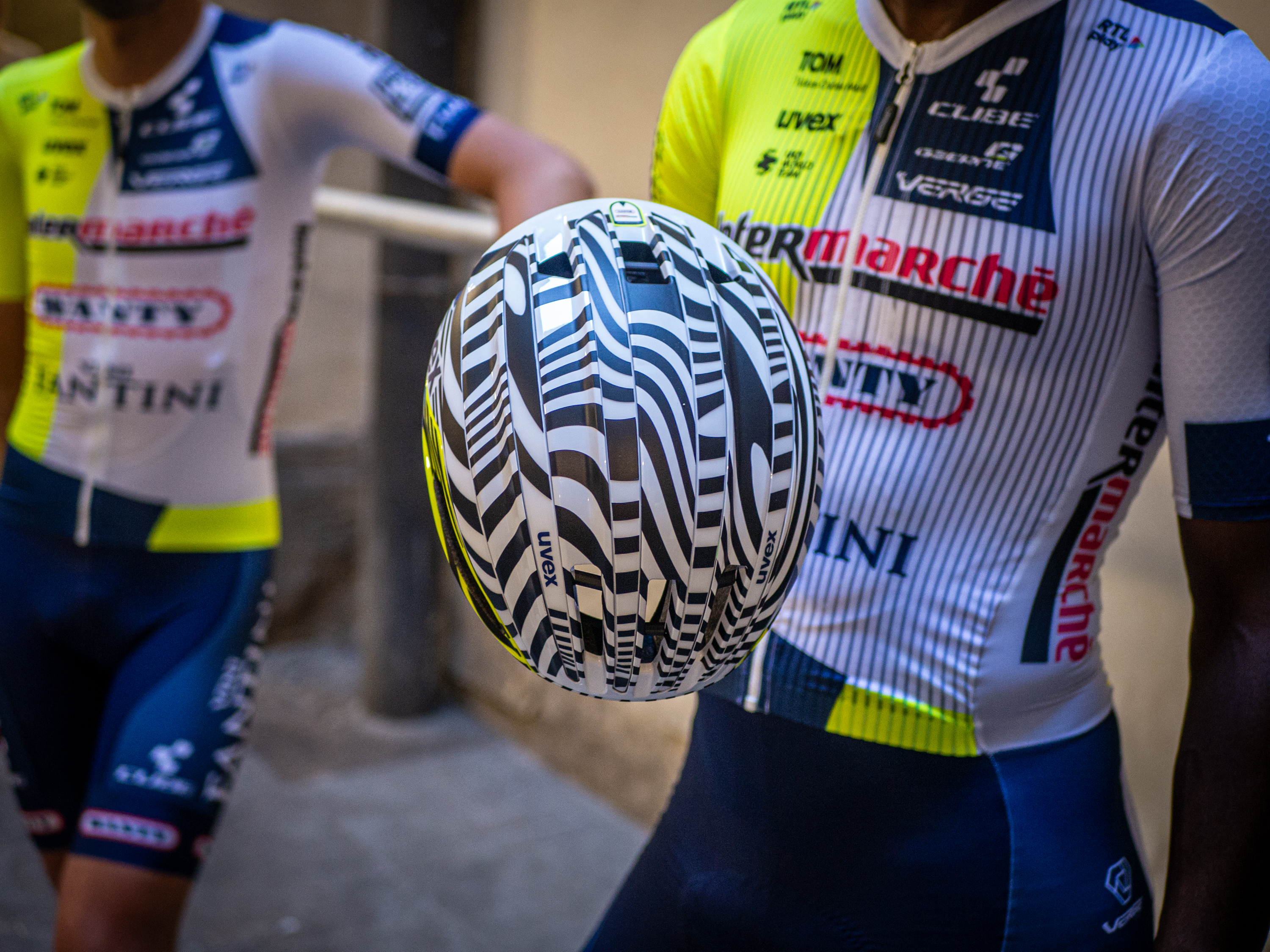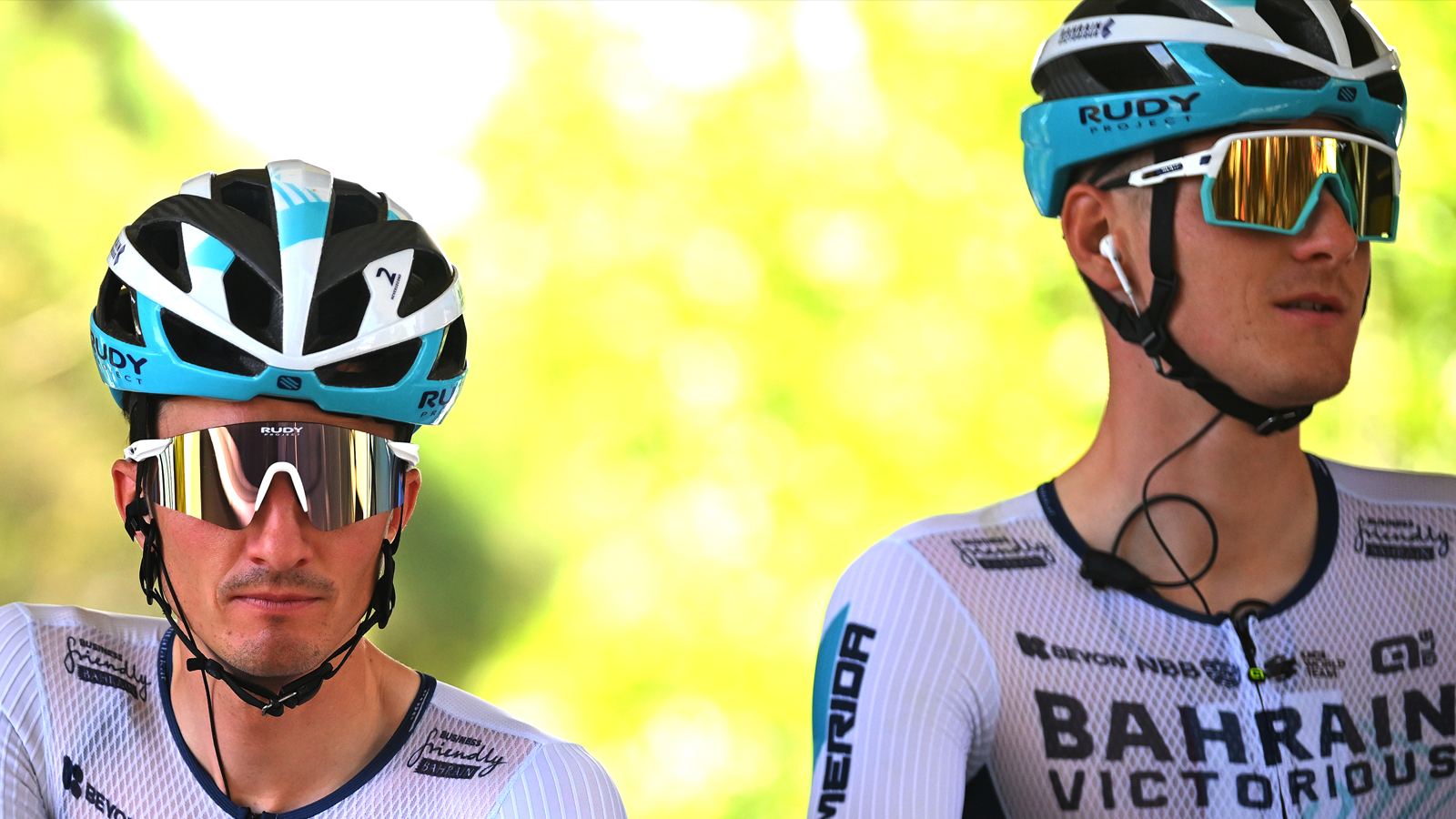
This year’s edition of the Tour de France has been a hotbed for new tech and nowhere is that more true than the helmets being used.
Scanning around the heads of the peloton, three teams look to be debuting new helmets, EF Education-Easy Post, Intermaché-Wanty and Bahrain Victorious. 2024 looks to be the year of the helmet with EF Education-Easy Post already causing a stir with the POC Procen Air that blended time trial helmet design with road helmet comfort.
Visma-Lease a Bike were also at it when the team came close to breaking the internet with its new Giro TT helmet that flipped the script on helmet design as we knew it.
Fortunately for the cycling fashion community, there has been nothing quite as radical spotted at this year's Tour. Both POC and Rudy Project have showcased new vented helmets whilst Uvex has gone down the route of a vented helmet with an optional aero cover.
EF Education-EasyPost’s new POC helmet

When POC revealed the Procen Air at the early season races, it garnered a lot of media attention blurring the lines between a road and TT helmet. With the dust now settled and the Procen Air now a standard sight within the pro peloton POC has been at it again.
The new helmet doesn’t look to have any labels on it but going by its heavily vented design it is safe to assume it is either an update to the existing Ventral or a new model that would replace it.
On first inspection, the blunt front face of the helmet is what grabs your eye with an almost 90-degree edge separating the front face to the top of the helmet.
Although unusual this design does present the five large front vents directly into the airflow. These massive intakes will likely allow riders to keep a cooler head in hotter conditions simply by their position and size.

Looking past the large front vents, the top of the helmet is a far smoother affair with only two small vents towards the rear of the helmet breaking up the otherwise covered top section. It is not a completely smooth top with the pink ridges sitting more pronounced than the darker sections however this portion of the helmet has certainly been designed with aerodynamics in mind.
The rear of the helmet sports a rather blunt profile with a series of large exhaust vents all coming together to form a large hot-air outlet. We have seen blunt helmet profiles in the past allowing riders to adopt an aero position without compromising the performance of the exhaust vents.
Intermaché-Wanty’s dual-purpose Uvex helmet

The team of stage three winner Biniam Girmay, Intermaché-Wanty have been sporting a rather striking new helmet across the opening stage of the Tour. The razzle dazzle camouflaged helmet looks to be a dual-purpose offering with the helmet making use of an external shell covering to hide the vents and increase its aerodynamic properties.
In its stripped-back, vented guise, the unnamed helmet makes use of five channels that look to run almost the entire length of the helmet to guide cooling air over the rider's head. There are only a few carbon fibre struts that join the channels of the helmet together that break up the vents.

With the removable aero shell fitted the helmet takes on a noticeably more aero form. The outer two channels are completely covered with the central three reduced to smaller vents extending only a few centimetres from the brow.
The detachable aero cover has already gotten the team into a bit of hot water resulting in the team superglueing the shells on to comply with UCI equipment regulations. This is because detachable aero coverings on helmets are banned for use in competition.
With or without the aero cover fitted the exhaust vents at the rear remain the same. Four large central vents take care of carrying passing airflow away from the rider.
Bahrain Victorious’ new vented Rudy Project

Much like Giro, Rudy Project has already released a new helmet this year in the shape of the Wingdream TT helmet. Since then the brand has gone on to release the Rebel, a vented helmet that the brand claims, “sets new standards in safety, sustainability, and performance.”
The new helmet uses carbon fibre within its construction allowing less polystyrene to be used. This has the benefit of reducing the overall footprint of the helmet as well as increasing the size of the vents.
Aesthetically the Rebel looks more traditional in style than the other new helmets with a series of vents positioned across the front and top of the helmet. In contrast to the Uvex helmet design using five main continuous channels for cooling the Rebel uses 22 separate vents across the helmet.

The helmet is also said to use recycled polycarbonate in its construction with the padding and straps also being made from recycled materials emphasising Rudy Project’s commitment to sustainable product design.
The Rebel sits alongside the aero-focused Nytron with team Bahrain Victorious able to choose between the two depending on the stage profile and weather conditions.







